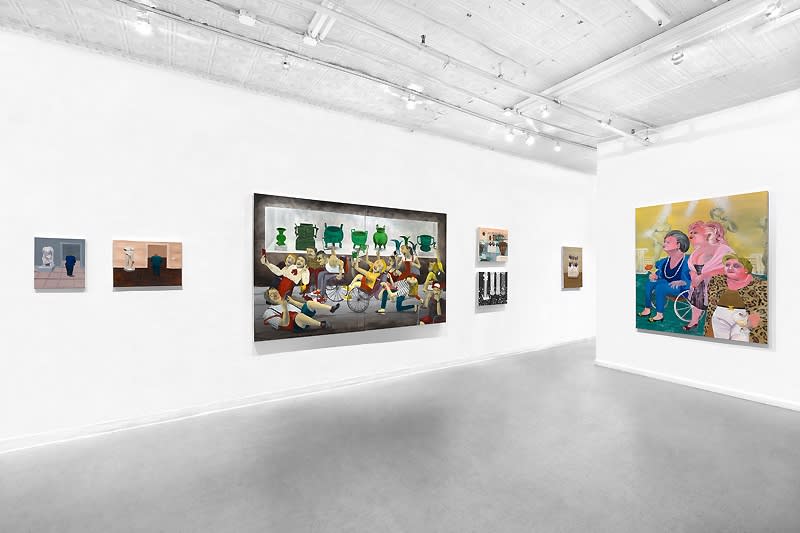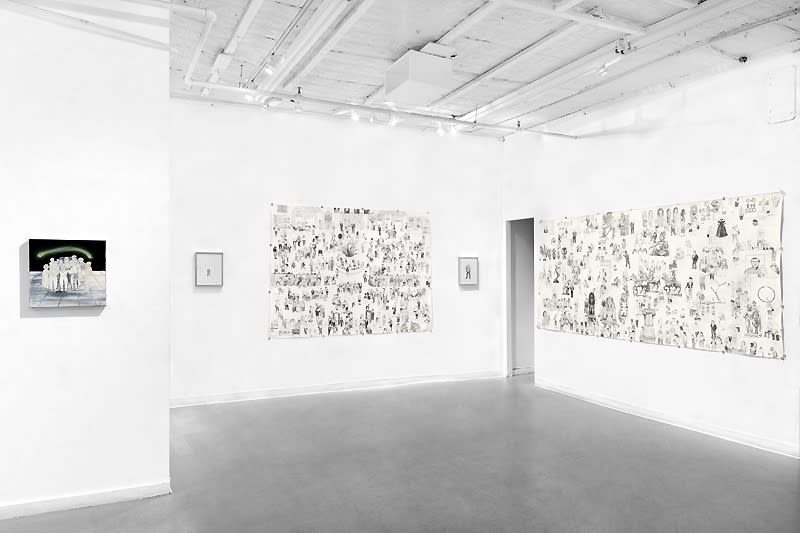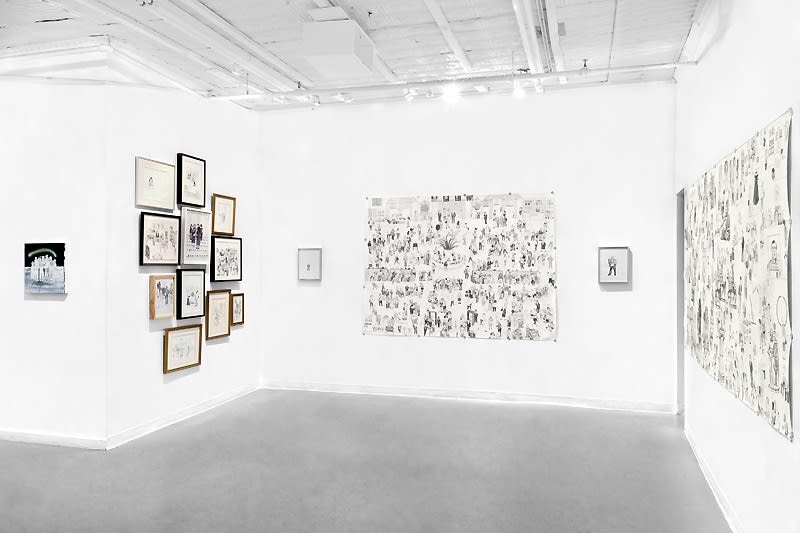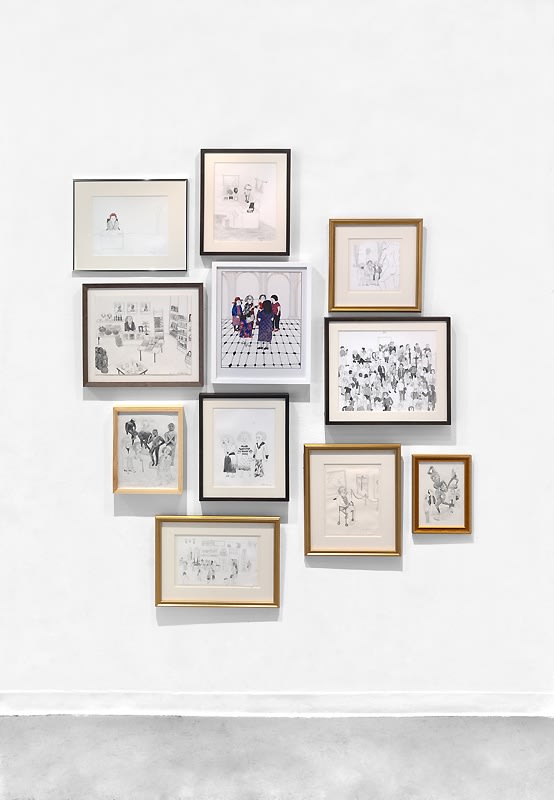Gallery 456 and the Chinese American Arts Council is pleased to present "A Museum Show", a solo exhibition of Taiwanese painter Hai-Hsin Huang. The exhibition presents a series of recent oil paintings and drawings, and will be open August 26th through September 23rd, 2016.
The exhibition explores the unfortunate qualities of a popular museum that often dampen one's experience: tweeting crowds, forever queues, rowdy schoolchildren, the unapologetic gift shop, bloated benches of the bored and erudite. Her humorous and bewildered characters - each face as singular and studied as a portrait - gaze with half lids, yawn or Instagram. The Greco-Roman sculptures, Grecian vases and Picassos are pulled from the MET and MoMA, each piece possessing as much personality as their admirers. Her mobbing of museum objects remind us of Paul Valéry's marvelous little essay of a similar tone, The Problem of Museums:
"I am not overfond of museums. Many of them are admirable, none are delightful. Delight has little to do with the principles of classification, conservation, and public utility, clear and reasonable though these may be. At the first step that I take toward things of beauty, a hand relieves me of my stick, and a notice forbids me to smoke. Chilled at once by this act of authority and by the sense of constraint, I make my way into a room of sculpture where a cold confusion reigns...I am lost in a turmoil of frozen beings."
Such turmoil is well related in Huang's large-scale drawings, such as The Met (#1 and #2), where a number of sphinx, Rodins and the Three Graces exist listlessly alongside tourists in the Great Hall; of marble or Manhattan Tours, each subject is exquisitely depicted. These drawings present a playful sampling of New York personalities, but also question the institutional hoarding - and occasional stealing - of objects, as well as the upper class system that supports it. Indeed, many of her characters, as in Gala, sport teetering wine glasses, formidable jewelry and heavy makeup. They stare, mesmerized or possibly drunk, at objects with hilarious intent. Just as Valéry warned, in the midst of such artistic glut, "we grow superficial."
Art history imbues the rendering of Huang's subjects beyond the museum object as well. In the large oil painting, The Chinese Wing, a gaggle of half mad schoolchildren photography a display of ancient vases with atypical enthusiasm. Wild eyed with mouths gaping, each child caricatures the "laughing man" - the leitmotif of Yue Minjun (who is perhaps China's most recognized contemporary painter). This is a poignant intersection of ancient Chinese and contemporary art: both are leveled under the consumer gaze, separated and dissected by panes of glass (iPadded or museum-grade).
Throughout "The Museum Show," each bemused millennial, deranged schoolboy and punch drunk patron speaks to the heart of Valéry's problem with museums: "The ear could not tolerate the sound of ten orchestras at once," no more than our smart phones can document every blockbuster acquisition. Nonetheless, the honest individuality granted to each of Huang's subjects celebrates the diversity of humanity, and its embarrassment of riches, with as much humor as melancholy.








